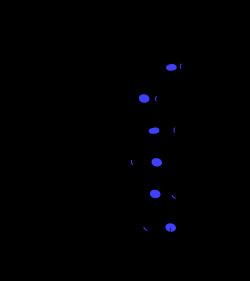Domain Eukaryota Rank Order | Scientific name Trypanosomatida Higher classification Kinetoplastida Subclass Metakinetoplastina | |
 | ||
Family TrypanosomatidaeDoflein 1901 Lower classifications Leishmania, Trypanosoma, Crithidia luciliae | ||
Trypanosomatida is a group of kinetoplastid excavates distinguished by having only a single flagellum. The name is derived from the Greek trypano (borer) and soma (body) because of the corkscrew-like motion of some trypanosomatid species. All members are exclusively parasitic, found primarily in insects. A few genera have life-cycles involving a secondary host, which may be a vertebrate, invertebrate or plant. These include several species that cause major diseases in humans.
Contents
Medical importance
The three major human diseases caused by trypanosomatids are; African trypanosomiasis (sleeping sickness, caused by Trypanosoma brucei and transmitted by tsetse flies), South American trypanosomiasis (Chagas disease, caused by Trypanosoma cruzi and transmitted by triatomine bugs), and leishmaniasis (a set of trypanosomal diseases caused by various species of Leishmania transmitted by sandflies).
Evolution
The family is known from fossils of the extinct genus Paleoleishmania preserved in Burmese amber dating to the Albian (100 mya) and Dominican amber from the Burdigalian (20-15 mya) of Hispaniola. The genus Trypanosoma is also represented in Dominican amber in the extinct species Trypanosoma antiquus.
Taxonomy
There is one family in this order - Trypanosomatidae.
Fifteen genera are recognised in the Trypanosomatidae and there are three subfamilies - Blechomonadinae, Leishmaniinae and Strigomonadinae.
The subfamily Blechomonadinae has one genus - Blechomonas.
The subfamily Leishmaniinae has three genera - Crithidia, Leishmania and Leptomonas.
The subfamily Strigomonadinae also has three genera - Angomonas, Kentomonas and Strigomonas. The genera in the subfamily Strigomonadinae are characterised by the presence of intracellular bacteria.
The other genera are Blastocrithidia, Herpetomonas, Jaenimonas, Paratrypanosoma, Phytomonas, Sergeia, Trypanosoma and Wallacemonas.
Three genera are dixenous (two hosts in the life cycle) - Leishmania, Phytomonas and Trypanosoma and the remainder are monoxenous (one host in the life cycle).
Paratrypanosoma appears to be the first evolving branch in this order.
Life cycle
Some trypanosomatids only occupy a single host, while many others are heteroxenous: they live in more than one host species over their life cycle. This heteroxenous life cycle typically includes the intestine of a bloodsucking insect and the blood and/or tissues of a vertebrate. Rarer hosts include other bloodsucking invertebrates, such as leeches, and other organisms such as plants. Different species go through a range of different morphologies at different stages of the life cycle, most have at least two different morphologies. Typically the promastigote and epimastigote forms are found in insect hosts, trypomastigote forms in the mammalian bloodstream and amastigotes in intracellular environments.
Morphologies
A variety of different morphological forms appear in the life cycles of trypanosomatids, distinguished mainly by the position, length and the cell body attachment of the flagellum. The kinetoplast is found closely associated with the basal body at the base of the flagellum and all species of trypanosomatid have a single nucleus. Most of these morphologies can be found as a life cycle stage in all trypanosomatid genera however certain morphologies are particularly common in a particular genus. The various morphologies were originally named from the genus where the morphology was commonly found, although this terminology is now rarely used because of potential confusion between morphologies and genus. Modern terminology is derived from the Greek; "mastig", meaning whip (referring to the flagellum), and a prefix which indicates the location of the flagellum on the cell. For example, the amastigote (prefix "a-", meaning no flagellum) form is also known as the leishmanial form as all Leishmania have an amastigote life cycle stage.
Other features
Notable characteristics of trypanosomatids are the ability to perform trans-splicing of RNA and possession of glycosomes, where much of their glycolysis is confined to. The acidocalcisome, another organelle, was first identified in trypanosomes.
